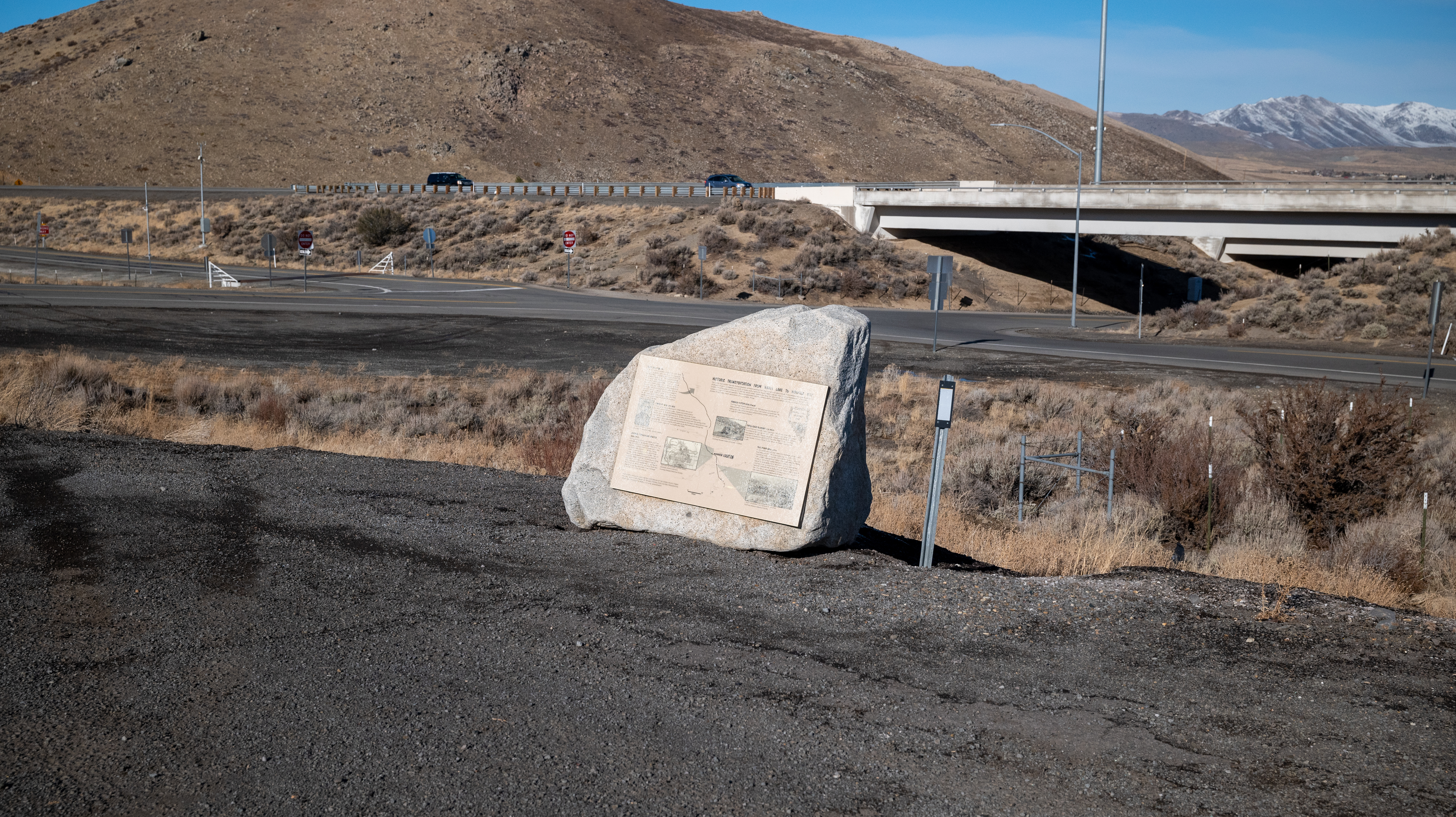Historic Transportation
The historic road corridors from the Truckee Meadows northwestward into the Honey Lake area contains a tangle of intertwined routes following the course of valleys, portions of an emigrant trail cutoff, toll roads, county roads and casual parallel routes developed to bypass blockages such as mud holes. Construction of the paved precursor to U.S. 395 and recent freeway construction along this same corridor have obliterated much of the earlier road system, cutting it into isolated segments. The road is associated with the continuing history of transportation in the state of Nevada, reflecting the process of road improvement and economic and demographic change.
HONEY LAKE 1856-1863
In 1856, the early settlers of the region, the Honey Lakers, proposed the territory of Nataqua, encompassing the land along the eastern Sierra from Susanville to Carson Valley. The 1859 silver strikes in the Comstock Lake generated a prosperous market for the ranchers' livestock and produce. Freight wagons and stagecoaches ran regularly over the rutted road from the Honey Lake area to Virginia City and strengthened the settlers' attachment to eastern Sierra settlements rather than those in California. The Honey Lake ranchers felt so strongly about their independence and connection to the Great Basin environs, they fought the 1863 Sagebrush War attempting to block their annexation to Plumas County, California.
EMIGRANT TRAIL 1851-1855
In 1851, James Pierson Beckwourth (1798-1866), the son of Sir Jennings Beckwith and a slave, located and constructed a wagon road connecting the California Emigrant Trail in the Truckee Meadows to Marysville, California via Sierra Valley (portions of Highway 70). Beckwourth, a trapper and trader, hoped to earn his fortune with the opening of the road; however, he was never reimbursed as promised by the mayor or Marysville for road construction. The trail served for a few years as an alternative pass through the Sierra; it became a byway for local traffic after 1855.
ROADSIDE STATIONS AND RANCHES 1850s
This marker is located at the Peavine Ranch, an overnight stop for the travelers along the road from the Truckee River to ranches near Honey Lake. The ranch advertised a well-stocked table and bar and first class beds. Purchased in 1862 by Fielding Lemmon, it was initially part of real estate and mining promotion as platted on this 1867 map, but Peavine grew instead into a prosperous livestock operation. Several other ranches were located along the road, yet, for nearly a hundred years regional growth centered around downtown Reno and Sparks. Over time, most of the ranches and stage stops were replaced by small isolated communities, then larder communities, and eventually suburbs.
HIGHWAY SYSTEM 1930s-PRESENT
The Three Flags Highway gave way to U.S. 395, which was an extension of Virginia Street in Reno. In the 1970s a four-lane system was proposed. The highway generally follows the same transportation corridor and still cuts through the Peavine Ranch property.
THREE FLAGS HIGHWAY 1923-1930s
One of the first federally funded highways in Nevada was a macadam road from Reno to the Nevada/California border. The Nevada Highway Commission was organized in 1917. Federal money was mandated for Nevada in 1921 and construction started in April 1922 for the Three Flags Highway, the road linking Canada, the United States, and Mexico. Portions of the road still remain.
TOLL ROADS 1850s-1860s
Prior to state and federally constructed highways, a stage and toll road between Honey Lake and Virginia City was more or less maintained under a succession of private owners such as Myron C. Lake. In 1861, Lake traded property in Honey Lake Valley for the log toll bridge across the Truckee River with Charles W. Fuller of Susanville. Lake applied for a franchise to improve, maintain and construct a toll road from three miles south of this bridge to the California/Nevada border excluding passage through town streets of Reno. The early road, approximately 20 miles long, was in a constant deplorable condition and impassable at times.
Photo courtesy of David J. Harrison

